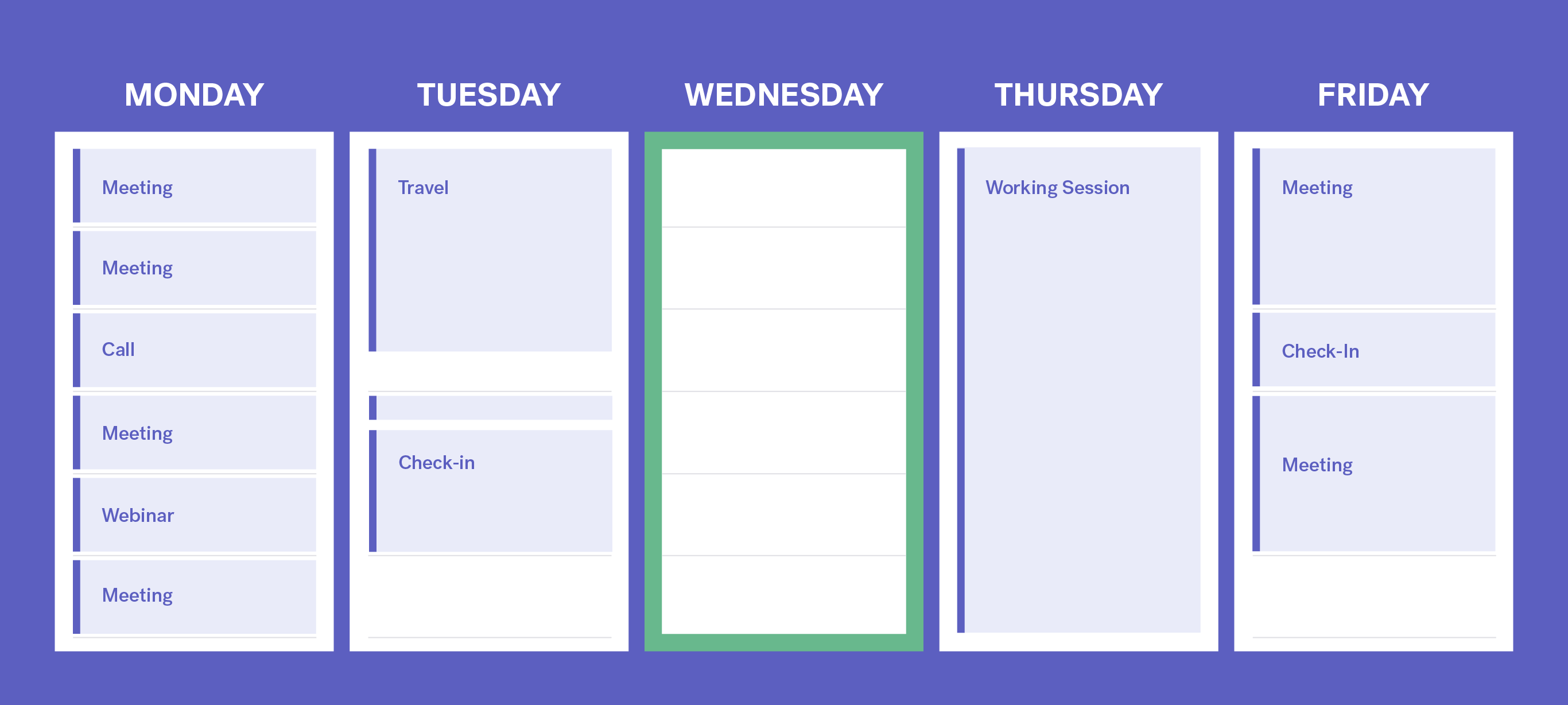The Big Story: Shopify expects productivity boost from meeting ban – CIO Dive
“Feeling seen is more important than simply being seen for employees to connect to their culture.”
Meet less to do more. A lot less, for a lot more.
2-minute read
In a moment when a healthcare leader’s resources are strapped – and the straps seem to be getting tighter – making the best use of every colleague’s time and energy is exquisitely important.
With this in mind, we watched with an envious side eye as Shopify announced plans in January to eliminate some 76,000 hours of meetings over the year, by clearing employee calendars of all recurring meetings with more than three people and restricting all meetings on Wednesdays.
Elsewhere, to tackle the 31 hours of unproductive meetings per month, companies are moving to standing meetings – not standing as in “recurring,” but meetings where everyone actually stands. Legs getting tired? Your meeting is too long.
Is this a dream? Can a company let go of its meetings-as-life-preservers and still stay above water or, even, swim faster? Seems so.
Shopify reported last week that their average meeting time was down 33 percent from last year and its staff is on track to “to complete around 25 percent more projects by the end of the year” compared to 2022.
It’s encouraging to see some real-world demonstration of the research that appeared in the Harvard Business Review last year, which said:
- 92 percent of employees consider meetings unproductive
- Productivity was 71 percent higher when meetings were reduced by 40 percent
Ok. We get it. You do, too. Few things in organizational life can be as soul-crushing as attending hours of Zoom calls stacked on each other like planes at O’Hare or having body parts go numb sitting in the same chair for a day of pointless PowerPoints.
Yet, knowing all the above, we (and you) still meet. A lot. Why do we inflict this upon ourselves? Three thoughts and quick to-dos.
Communications. Sometimes we meet a lot because it’s our primary – or only – vehicle for internal communications. It’s a kind of a safety net we deploy to ensure our messages are delivered and everyone is on task, even as our organizations are awash in a sea of communications tools.
Our take: Ask “Could this meeting have been an email?” Probably. If a meeting is your leading “technology” for sharing information, if most of your meetings are check-ins and status updates, dive into Teams, Slack or other tools to liberate this time for your colleagues.
Lack of trust. The folks at Range offer these team trust telltales. A team with trust issues might:
- Feel uncomfortable being vulnerable with each other
- Struggle to bring new team members into the fold
- Suffer from micromanagement or regularly hound each other for information
- Discuss the same topics repeatedly
To fill this trust vacuum, an untrusting group can congeal into a single student body, meeting and meeting to be “as one” instead of deploying as a team of strong and trusted individual players, each taking their unique skills to their unique assignments. Meetings are long; productivity is low.
Our take: Fewer meetings will be a lovely byproduct of something even more valuable – building a culture of trust and accountability among your colleagues. The HBR article observes that when the time in meetings declined significantly “people felt valued, trusted and more engaged, subsequently working harder for their company.” That virtuous cycle can start with you.
Culture: Speaking of culture, sometimes we meet because we – or our colleagues – want to “feel” seen. The quotes are important. “Feeling seen is more important than simply being seen for employees to connect to their culture,” says one HR expert.
Our take: Feeling seen – feeling connected is mission critical, especially so given today’s competition for talent and high-performance expectations. Deliberately create culture-building opportunities that recognize your colleagues for the value they and their work bring to your team, to the organization and to you.
Cheers to Shopify for reducing their meetings. Their decision to Zoom out is resulting in better attention and possibly better retention. Alas, that’s all for now. Gotta go! Double-booked and running late…
Image Credit: Savannah Ray




